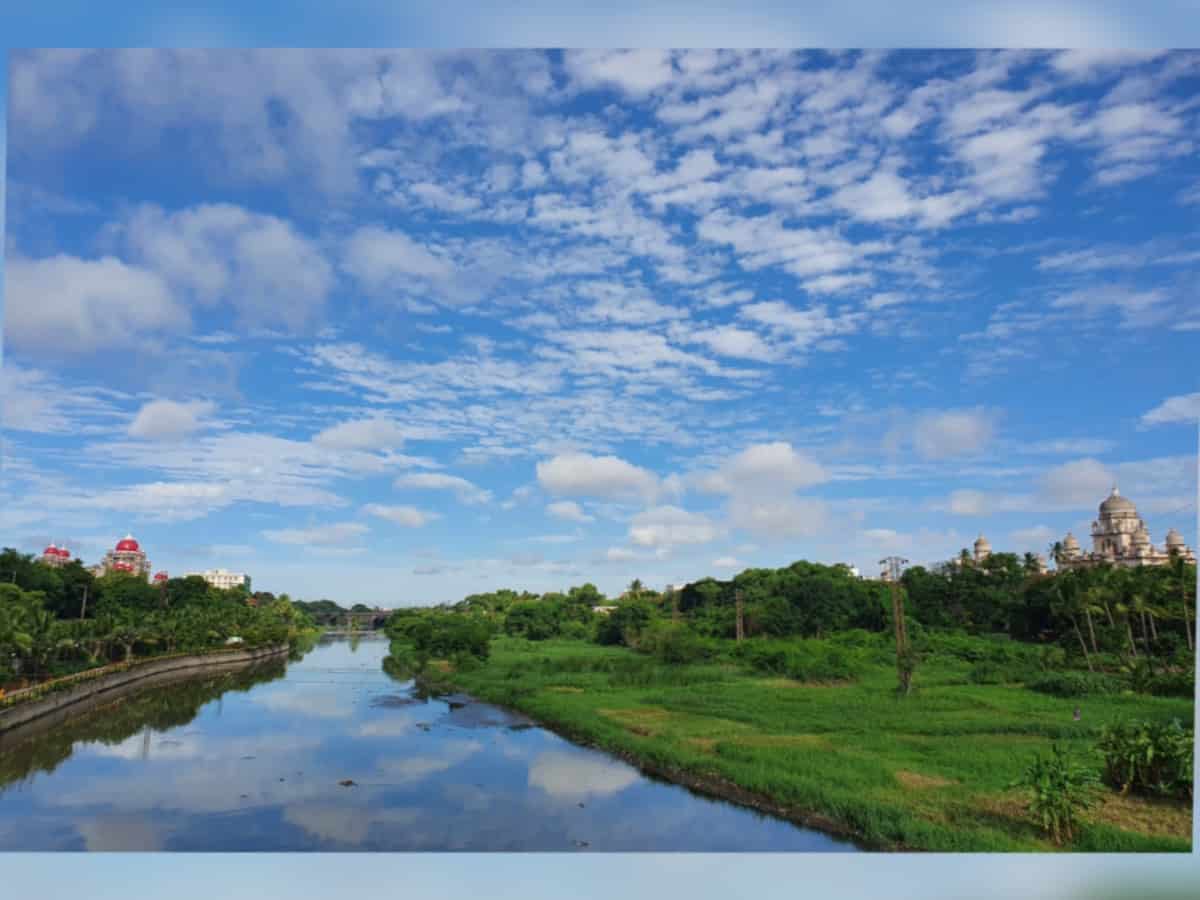
September 24, 1970: It was just another Thursday, so it seemed, when I returned home from work. I had hardly changed and settled down for a steaming cup of coffee when I heard commotion outside – people whining and screaming. I stepped out only to see men and women fleeing in panic.
It was clear from the rising din that the swollen Musi was submerging everything in its way while another version was that the brimming Gandipet lake (Osman Sagar) had breached and spread devastation. None had time to stop or explain because dear life alone mattered, nothing else.
The Musi flowed through Chadarghat nullah barely 500 yards away from our CIB quarters behind the Kacheguda station. The swirling waters could reach us any time. The all-embracing fear infected us too. We were at the time expecting our first born in three weeks. This factor coupled with the immediate proximity to the raging river unsettled my poise and judgment.
I, my wife, her young brothers and sisters lost no time. Quickly locking the front door, we crossed the railway track (crouching and crawling under stationary bogies was routine for us living behind the station) and hurried to the safety of the hill-top Veerannagutta (Shyam Baba temple complex) opposite the station. The spot commanded a bird’s eye view of chaotic scenes on the station road. People were loudly pleading with every imaginable god to save them.
Fifteen minutes, then thirty and finally an hour had passed amid the looming anxiety and tension. There was no trace of the death-heralding flood. Meanwhile, loud-speaker mounted police vans went about saying there was no flood threat; it was just a rumour. But to the frenzied ears, it sounded like a red alert.
Residents of Nallakunta, Sitaphalmandi, Warasiguda and neighbourhood areas clambered up the Osmania University library and the Arts College buildings. The RTC bus in which my brother returned home swerved from its charted path and hurried into narrow lanes to avoid being washed away! Similar scenes were in evidence in every part of the city.
Realising at last that it was indeed a rumour, we trudged back home. We had thus become victims of a historic prank. We laughed to think how stupidly gullible we were. We felt like ‘silly asses.’
I call it a historic prank because 50 years on, it is being talked and written about.
From our side, the panic response seemed pardonable on two counts: one, the Musi flowed dangerously close and two, the city had experienced unprecedented downpour spreading death and devastation barely three days before that.
Now about the real deluge. On that fateful evening (September 21-22, 1970), I was at The Daily News office (my former work place near Nampally Railway Station) to pick up an important letter from All India Radio. It started pouring suddenly, gathering force and intensity by the minute. Finding a brief lull, I made a foolish attempt to ride back home. I was thrown off the bicycle by the swirling waters right outside the gate while the bike was swept away and luckily halted by an electric pole. It required two others to pull it from the current. Soon it poured again in torrents.
Finding no sign of the rain abating, I stayed back at The Daily News office, snoozing on a bench. As I pedalled back home, I saw clear evidence of the havoc that had been wrought. Fallen branches, bent electric and telephone poles, rubble of damaged houses, carcasses and the flotsam carried by the overflowing drains etc littered the roads.
Back at work (The Deccan Chronicle) in the afternoon, I learnt that thousands had been rendered homeless and a hundred people lost their lives. The Musi was in spate; Hussain Sagar, Osman Sagar (Gandipet) and Himayat Sagar and minor reservoirs brimmed over. Abrupt opening of the sluices of one of the major reservoirs (Gandipet or Himayatsagar) led to many low lying areas getting inundated.
Bystanders at Osman Gunj watched helplessly as the raging waters swept a mother and her son to death. The correspondent of a Telugu newspaper saw two double storey buildings come down like a pack of cards right before his eyes at Topkhana. The biggest casualty was reported from a four-storeyed building in Gowliguda in which about 100 people lived. Over 30 bodies were removed from this building alone. The telephone exchange at Gowliguda was also swamped by the surging waters, snapping links with the rest of the city. The old city and many low-lying areas on this side of the Musi of bore the brunt of the havoc.
Chief Minister Kasu Brahmananda Reddi, accompanied by Home Minister J. Vengala Rao, Majlis leader Sultan Salahuddin Owaisi and officials visited the affected areas. The Army was requisitioned to assist civil authorities in rescue and relief operations.
The 1970 deluge had been arguably the worst calamity after the September 28, 1908 catastrophe. The historic water levels are engraved on concrete slabs at Chaderghat police station and the mosque at Petlaburj. As a student, I saw such signposts in King Kothi also. The Chaderghat PS shows 1970 levels too. The City had witnessed many a deluge subsequently but nothing comparable to the 1970 disaster.
It is a sad commentary on the current state of affairs that the city remains waterlogged, grid-locked and plunged in darkness even in the face of modest rain.
Dasu Kesava Rao is a seasoned journalist who has worked, among several newspapers, with The Hindu and served as its Bureau Chief in Hyderabad.

